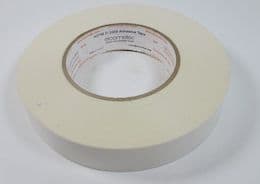
-----
Industry specs for powder coating thickness and testing methods?
Q. We are a rack supply company. As per standard in China, the rack coating thickness is 60-80 µm, but can anyone indicate where is it coming from -- the international standard? Which standard indicates this coating thickness, customer is struggling with this? Thank you.
Tracey ZHAOSales Manager - shanghai
January 9, 2023
A. Hi Tracey
You should always follow your powder manfacturer's data sheet; in there you'll find the recommended layer thickness of your powder. So take a look in that, or talk with the manufacturer. I've never heard of a industry standard of layer thickness in powder. It all depends on the powder itself.
- Denmark
March 30, 2023
⇩ Related postings, oldest first ⇩
⇦ Tip: Readers want to learn from your situation;
so some readers skip abstract questions.
Q. I need to know what are the industry specifications for powder coating thickness.
Larry J [surname deleted for privacy by Editor]process engineer - Elkhart, Indiana
2004
A. That is a tough one to give a general answer to, Larry, since the coatings could go as thick as 10 mils, or even more, for thermoplastic coatings applied by fluidized bed, or as thin as a couple of mils or possibly as low as even one mil for polyester coatings applied by electrostatic spray. What kind of parts, and what kind of exposure conditions please ?

Ted Mooney, P.E.
Striving to live Aloha
finishing.com - Pine Beach, New Jersey
Ted can be retained for immediate
answers or long term project help
Q. The application method is electrostatic spray. The environment is best described as indoor laboratory. What I am trying to determine is how much mechanical tolerance I need to accommodate for this type of finish, or what are reasonable coating thickness tolerances can I give to the finisher.
Larry J [returning]process engineer - Elkhart, Indiana
A. The standard film thickness for a standard powder coating for optimum mechanicals is between 60 and 80 microns (about 2-3 mils).
Hope this helps,
- Lincolnshire, U.K.
? Please check your details?
I'm not saying "I'm right and you're wrong", but from what I know of electro-plating of fasteners (my main field of knowledge), a recent enquiry for powder-coating, and from Google, I believe "60-80 microns" is actually 0.06 mm-0.08 mm.
Semi Technical Sales / Purchasing of Industrial Supplies - Glasgow, Scotland
August 5, 2021
![]() Hi Martin. Your conversion factor is certainly correct! But so was Drew's ...
Hi Martin. Your conversion factor is certainly correct! But so was Drew's ...
The issue here is the universal problem that slang is misunderstood in different contexts :-)
In the powder coating & plating industries in the USA and other places that do not employ the metric system, "mil" is a widely accepted slang abbreviation for thousandths of an inch. Drew was not saying that 60-80 microns is 2-3 millimeters, but 2-3 thousandths of an inch :-)
Luck & Regards,

Ted Mooney, P.E. RET
Striving to live Aloha
finishing.com - Pine Beach, New Jersey
Ted can be retained for immediate
answers or long term project help
Q. Is the 2-3 mil. thickness also the industry standard for powder coated deck rails? If not, what is the desired industry standard for that application?
Darryl D [surname deleted for privacy by Editor]- Grants Pass, Oregon
October 7, 2008
A. AAMA specifies coating film thickness not less than 30 microns, and British standard 40 microns or above, and powder coat supplier specifies 60-80 micron for architectural powder coatings.
Ganapathy [surname deleted for privacy by Editor]- Singapore
May 4, 2010
Q. Hi Ganapathy, Can you please provide the BS standard reference that says 40 microns minimum? Thanks in advance.
Alvin Diva Abadies- Dubai
July 25, 2021
A. Hi Alvin. Ganapathy's posting was from more than 11 years ago; I doubt that he monitors this page anymore.
BS EN 12206-1 is for powder coating on architectural aluminum ... are you doing architectural powder coating on aluminum or are you looking for something else? Thanks.
Luck & Regards,

Ted Mooney, P.E. RET
Striving to live Aloha
finishing.com - Pine Beach, New Jersey
Ted can be retained for immediate
answers or long term project help
Q. Dear sir,
Please mention the standard document for powder coating thickness?. It is required for our ISO document.
Thanks,
Umesh
- Bangalore
January 17, 2013
? Hi Umesh. The product line you are referring to is deckrails, and the coatings are polyester, correct? And you presently refer to no spec at all when you place powder coating orders?
Regards,

Ted Mooney, P.E.
Striving to live Aloha
finishing.com - Pine Beach, New Jersey
Ted can be retained for immediate
answers or long term project help
Q. Dear sir,
I'm referring to powder coating for industrial racks. For our audit purpose, I want to show them standard practice for Powder coating will be 60-80 microns. But I'm unable to get any standard documents or files for above matter. Please suggest me the documents or person?
- Bangalore, India
A. It is best to seek advice from the specific Powder Manufacturer for the product and especially the colour you are using.
60-80 microns is a good general target.
You will find, however, that different formulations from different manufacturers for different colours will vary widely.
Probably a good example of this would be to look at, say, Safety Orange.
A TGIC resin, Lead Pigmented Polyester Powder would probably be okay at 60 microns.
An Amide technology Lead & Cadmium-free Polyester Powder would almost certainly be translucent at 60 microns.
The trick there is to maximise opacity by thicker film build but avoiding orange peel.
Reds, Yellows & Oranges are the problem children.
Hope this helps.
Regards,
Bill
Trainer - Salamander Bay, Australia
![]() Thank you for your information
Thank you for your information
- Bangalore, India
Q. We're using polyester powder and I got a reading 100-200 Microns [ed. note: i.e., 2-1/2 to 5 thousandths of an inch]. Is there any effect for the integrity or the coating value?
Fer Castro- Dammam, Saudi Arabia
June 11, 2014
A. I refer to my earlier response to a very similar question which is posted to this thread.
At the thicknesses you describe it is almost certain that you are experiencing "orange peel" effect with polyester powder.
I assume that you are referring to standard Polyester powders?
If you are not worried about aesthetics there should not be a problem.
If you are referring to Thermoplastic or Fusion Bond Epoxy Powders then there is usually no aesthetic factor and such film builds are regarded as acceptable and even desirable.
Hope this helps.
Regards,
Bill
Trainer - Salamander Bay, Australia
Standards for acceptance of powder coating
Q. Is there any standard (UL, ASTM, etc.) which shows the limit/acceptance value of powder coating?
Fer Castro [returning]- Dammam, Saudi Arabia
June 24, 2014
A. Hello Fer. Specifications tend to be application related rather than arbitrary and covering everything including the kitchen sink.
But you can see architectural standards AAMA 2603, 2604 and 2605; and Australian standard AS 3715; and tape tests ASTM D3359 and GM 9071P; and impact test ASTM D2794; and there are many possible salt spray tests including xxx number of hours of ASTM B117 exposure; a rub test from the Powder Coating Institute (procedure #8); ISO 2360; and Qualicoat standards for thickness. Look for on-line articles by Gardco and Kenneth Tator.
Please describe your situation, product line, and exposure conditions and someone may be able to suggest more exacting standards and tests that will apply for your product. Good luck.
Regards,

Ted Mooney, P.E.
Striving to live Aloha
finishing.com - Pine Beach, New Jersey
Ted can be retained for immediate
answers or long term project help
Q. We have received the product with coating thickness of 200 microns. The product is a LED lighting enclosure. There is no bending operation after this process. We find the product is okay on peeloff test. Can we use it?
PRAKASH. KANAKOOR- MYSORE, KARNATAKA, India
July 23, 2014
A. Your question is posed without sufficient back ground.
Is the powder thermo-set or thermo-plastic?
What are you describing by: "peel off test"
Are you referring to an adhesion test?
In all, there are too many unknowns in your query.
Please be more specific.
Define your application criteria.
Define environmental factors in service life.
Define type, grade & quality of powder.
Define substrate, pre-treatment & cure schedule.
I could go on but basically you need to give the whole picture if you expect any meaningful assistance.
Best Regards,
Bill
Trainer - Newcastle, NSW Australia
A. The powder coat thickness would likely be controlled in the US by mil standards (military standards). I believe your end usage would drive which standard would be required.
Jean mcgovern- sheboygan, Wisconsin usa
⇦ Tip: Readers want to learn from your situation;
so some readers skip abstract questions.

Gopi Nath
- Mumbai, maharastra, India
December 7, 2014
A. Hi Gopi. A really quick (commercial) intro is at https://www.reliantfinishingsystems.com/an-introduction-to-powder-coating-quality-control-testing/
Please read my earlier reply for wider general references, or try you best to explain your powder coating needs so people can suggest tests specific to your product line. As you see on this page, and in the referenced books, there are different resins, different substrates, different application methods and conditions, and different corrosion resistance needs -- and it is difficult to explain all of the possible testing needs short of book length.
The Technology of Powder Coatings by S.T. Harris has a 20-page chapter well arranged by "Testing in the Development Lab", "Testing of Raw Materials", "Testing During Manufacture", and "Testing of the Finished Product" .
If the references provided are too general, please try to explain your situation as exactly as you can, and then I think our readers will be able to suggest the appropriate tests for your specific case.
Good luck.
Regards,

Ted Mooney, P.E.
Striving to live Aloha
finishing.com - Pine Beach, New Jersey
Ted can be retained for immediate
answers or long term project help
(you are on the 1st page of the thread) Next page >
Q, A, or Comment on THIS thread -or- Start a NEW Thread


